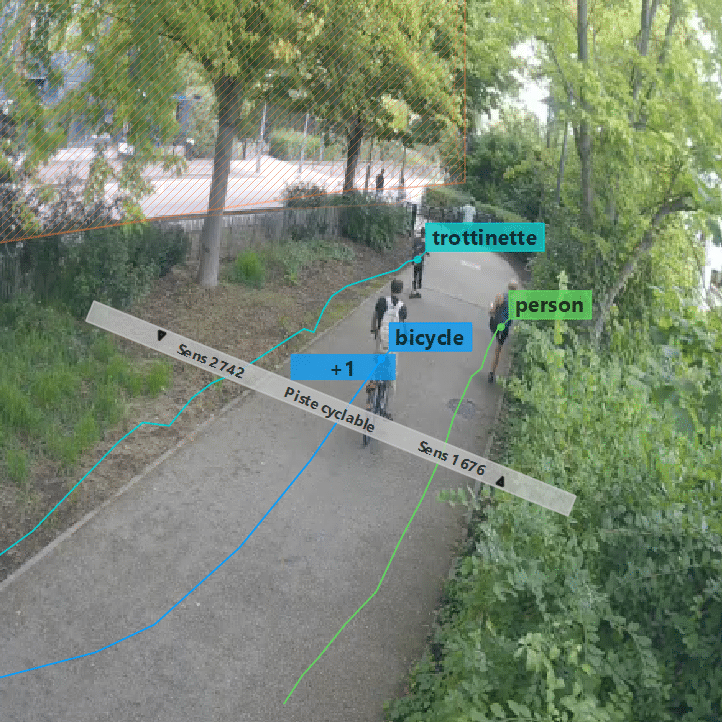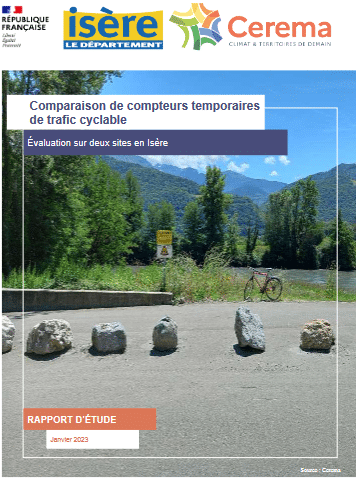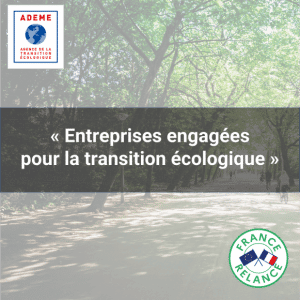Bike Counting: modern methodologies for bicycle path design
With the current climate situation and the need to decarbonize transport, the rise of the velotaf, the use of personal mobility devices (PMDs) and motorized personal mobility devices (MPMDs), the need to measure the use of cycle paths has become increasingly important. The methods used to measure bicycles and other “active” modes of transport have also undergone major changes.
In this context, the keywords “bike counter”, “bike counting” and “impact of bike lanes” are often mentioned in conferences, podcasts, TV shows and reports. This article explores the different methods of counting bicycles, their importance for adapting and optimizing infrastructures, and how technology is revolutionizing this field.
Why count bicycles?
Counting bicycles is not just a simple academic exercise. Traffic data is crucial for :
- Updating cycling infrastructure needs,
- Making investment and infrastructure decisions,
- Monitoring and adjusting ongoing projects,
- Identifying problem areas and proposing solutions.
And in this field, precision, reliability and completeness are the watchwords.
Traditional bicycle-counting methods
Automatic bicycle counters: magnetic loops, infrared sensors, tubes
These are traditional methods that have been widely used. Useful in dedicated, uncongested lanes, they provide moderately reliable classification, especially in heavy traffic or congested situations. The loops, on the other hand, require civil engineering for their installation.
Surveys, barometers and questionnaires
Questionnaires can be carried out to understand cyclists’ satisfaction and motivations, and to gather suggestions for improvement.
The age of technology: smart bike meters
Video Sensors
With advances in computer vision, video sensors have become a reliable and cost-effective method of counting bicycles. These sensors can be used day or night, and offer highly accurate data such as fine classification of modes, in dedicated or mixed lanes.
Artificial Intelligence
Sophisticated algorithms can detect, count and categorize bicycles, measure their speed, identify groups of cyclists and even understand their behavior. A software solution like “minUi“, developed by ALYCE, is a pertinent example of how AI can be used for deeper analysis in the mobility field. By combining the SME’s experience in the provision of travel data with technology and traffic engineering, the minUi tool is a Swiss army knife enabling any mobility professional to produce indicators, measurements and analyses autonomously and unlimitedly.

The 3 key stages in the development of bicycle lanes
Evaluation phase
At this stage, the aim is to assess the usefulness and efficiency of existing or proposed infrastructures. This is done by counting bicycles and studying ridership data.
Bicycle counting and other modes using video analysis
Step 1: Traffic flow analysis
Observing the flow of cyclists on existing bike paths or in the vicinity of the area in question enables us to determine peak times, the most frequently used routes and identify areas requiring improvements or adjustments.
Step 2: Study user behavior
Observing how cyclists interact with existing facilities helps to identify potential problems such as points of conflict with pedestrians, dangerous situations or frequent trajectory errors.
Step 3: Assessing road use
Analyzing how bicycle facilities fit into the overall context of the roadway enables us to analyze the success of the facility in cohabiting with other modes of transport such as cars, pedestrians and public transport. Video analysis can also be used to analyze Video analysis can also be used to analyze compliance with the layout, such as non-compliance with traffic lights, one-way traffic, speeding on a road, etc.
Adaption phase
After evaluation, plans can be adjusted according to user behavior. Off-line and/or real-time observations can be used to make adjustments, such as adding new markings, dynamic signage, designing urban layouts to correct trajectory errors, regulating traffic flow, etc.
Use of roadways by scooters and understanding queue jumping
Identification phase and solutions
Once the tracks are in place, it’s important to continue observing to identify problem areas and provide solutions.
Once the bike lanes are in place, it’s time for the optimization phase, with the following questions:
- Are there any problematic areas ?
- Is there a need to improve signage ?
- What new uses can be observed ?
For example, to identify high-risk areas or conflicts between soft and motorized modes of transport, interaction analysis can be used to determine the modifications needed to improve safety.
AI-based video analysis of video streams is a suitable tool for carrying out this study.
Observation of user behaviour on dedicated and mixed lanes and respect for bicycle lanes
Highlighting particular trajectories taken by motorcycles, using the central space of a 2x2 lane.
Conclusions and outlooks
The implementation of effective strategies for the planning and adaptation of cycling infrastructure is inseparable from rigorous and accurate bicycle counting. Numerous methods and technologies are available on the market, all of which can meet a specific need.
As the importance of sustainable mobility solutions grows worldwide, the economic, energy efficiency and reliability of counting methods become increasingly crucial.
Let’s not forget that in this context, business expertise plays a key role. It is the synergy between this expertise and technological advances, notably in artificial intelligence and computer vision, that is revolutionizing the field of data processing and opening up new possibilities for analyzing and observing mobility. These cutting-edge technologies enrich and amplify our understanding of urban mobility, while bringing unprecedented accuracy and completeness to the bicycle counting process.

- Publié le








